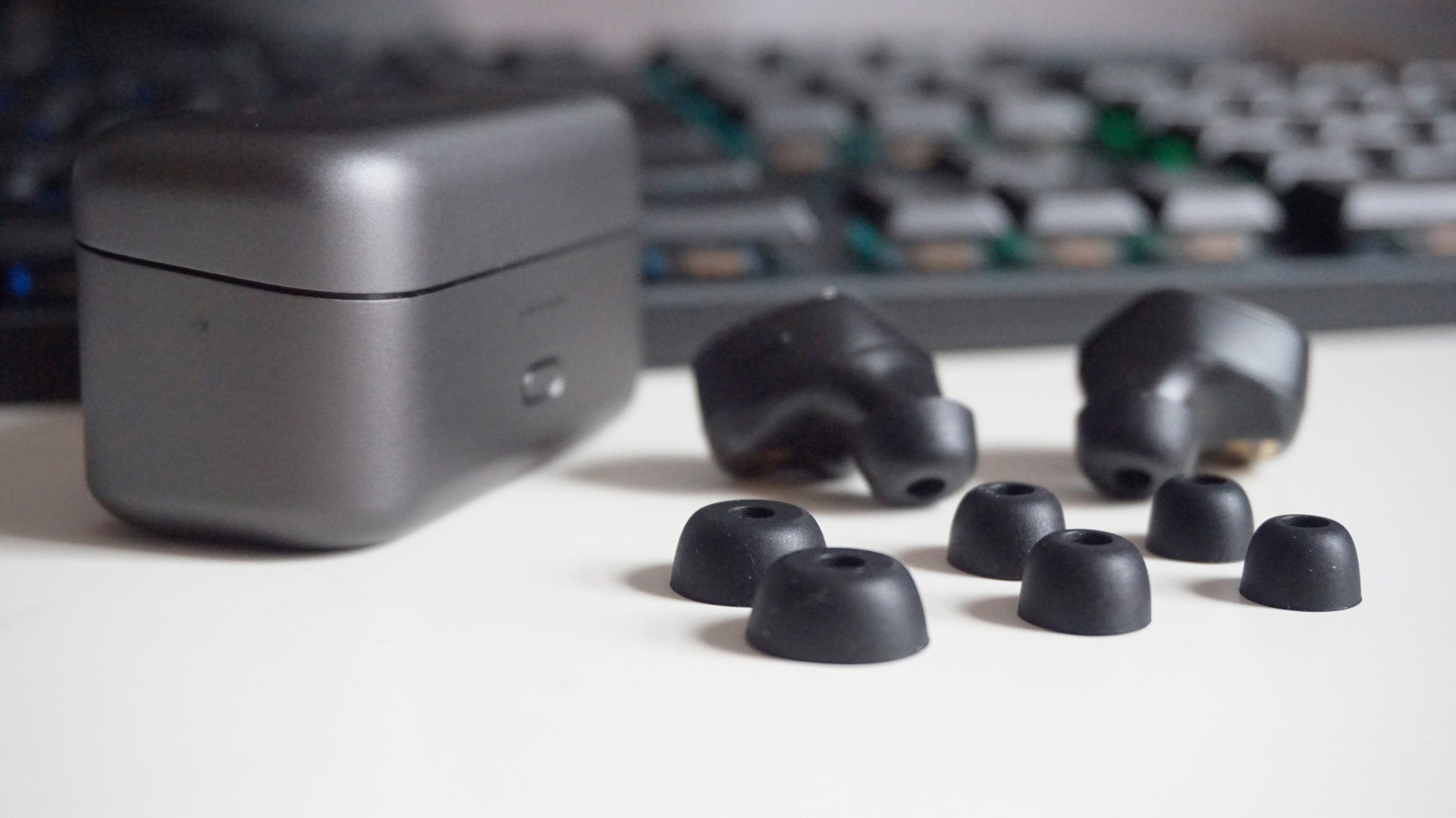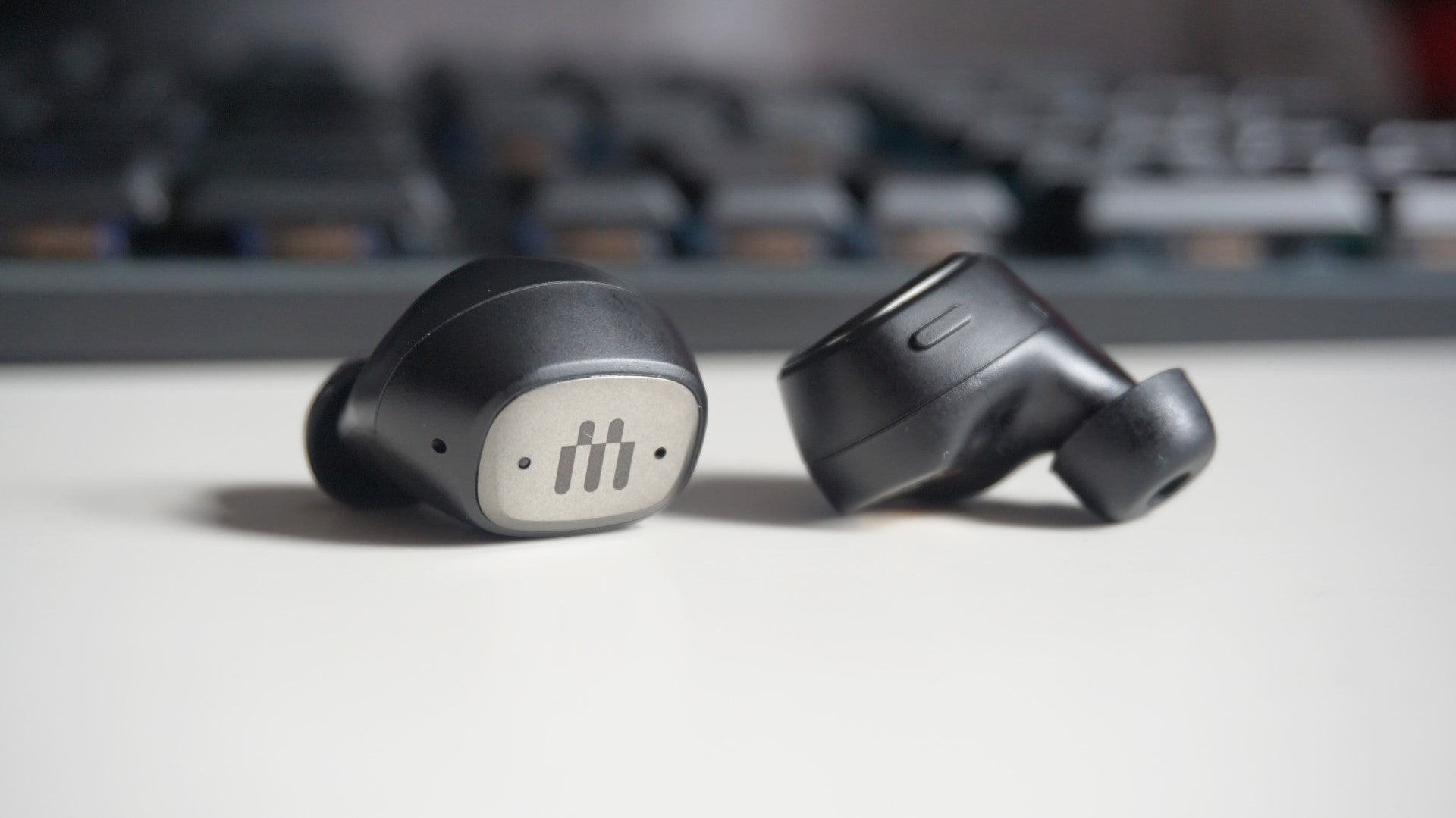If you’ve ever owned or seen a pair of Apple Airpods or Samsung Galaxy Buds and the like, then you’ll know what to expect from the GTW 270 Hybrid. These small wireless earbuds sit right inside your outer ear, nestling in nice and snug without the need for anything to hold them in place. It can be a strange sensation if you’ve never used earbuds before - you suddenly become acutely aware of even your smallest head movements, and an intake of breath can suddenly sound like you’re sitting on a roaring beach instead of in the comfort of your home. You get used to it, though, and after years of wearing in-ear headphones to work on the train I barely give this stuff a second thought anymore. Of course, an earbud’s fit is key when they’re just cosying up against your ear lobe, as you don’t want them to fall out every time you move your head, or have them distract you from the task at hand. A loose fit will affect their overall sound quality, too, as they’re designed to funnel everything straight down your ear canal for maximum effect. If an earbud is loose, some of that sound will inevitably escape, lessening their overall impact. The GTW 270 Hybrid comes with a variety of different buds to fix to the end of its audio drivers. There are four in total and they’re fitted with the smallest size out of the box. These offered a decent fit, but I eventually opted for the second largest rubber buds, which stayed in place perfectly. I could shake my head from side to side or walk around my house listening to a podcast on my phone and they never moved an inch. There are almost as many ways to connect them to your PC, too. They work over Bluetooth if your PC’s motherboard supports it, or you can use the bundled USB-C adaptor, which the GTW 270 Hybrid’s buds are already paired with out of the box. You needn’t worry if your PC doesn’t have a USB-C port, either, as it also comes with a bundled 1.5m USB-A adaptor / extension cable. My motherboard does, in fact, have built-in Bluetooth support, so I thought I’d see how they stack up as Bluetooth earbuds first. It took no time at all to pair them with my PC. All you have to do is open up its lovely little charging case with the earbuds placed inside, hold down the pairing button for a couple of seconds until its battery LED starts flashing red and blue and then pair them with your PC like you would any other Bluetooth device. It’s very simple, and I was up and running in less than a minute. Initially, I was worried that their tiny drivers wouldn’t be able to handle the heavy, industrial soundtrack of Doom (2016), but its thumping bass sounded surprisingly good on the GTW 270 Hybrid, and the deep kapows of its Super Shotgun still had a decent amount of heft to them. I wouldn’t say they rival a full-blown headset, mind you, as incoming fireballs sounded a touch muddy, while enemy plasma rifles sounded a little tinny and artificial. There was also a noticeable delay on clicking my mouse and the deep grunt of the Super Shotgun hitting my ears, which was off-putting enough that I quickly switched over to its USB-C dongle to see if this improved matters at all. The dongle uses aptX’s low latency tech to deliver its sound rather than standard Bluetooth, and my lag woes instantly disappeared. Shotgun blasts was pretty much instantaneous, leading to a much tighter, more immersive gaming experience overall. In quieter games, though, the GTW 270 Hybrid is right up there with the best gaming headsets I’ve ever tested. I got proper goosebumps listening to the binaural opening of Hellblade: Senua’s Sacrifice, for example, and the voices inside Senua’s head sounded even closer and more sinister than normal. Their warm, natural-sounding snickers and whispers whirled around my head in spectacular fashion, and it kept the soft, delicate water splashes of Senua’s oar and the deep thunder rumbling in the distance in perfect balance. Final Fantasy XV’s lush orchestral score was another aural delight on the GTW 270 Hybrid, too. Everything from Noctis’ trudging footsteps to his frantic battle commands came through loud and clear on EPOS’ earbuds, and they felt well-balanced against the busy orchestral music underneath. The GTW 270 Hybrid buds are great for listening to regular music, too. I’ve already mentioned how good they are for podcasts and the like, offering a much richer, cleaner sound than my puny phone speakers, and their clear, natural voice tones also translate to great song vocals, too. They’re also very adept at handling detailed orchestral suites, and they’ve been brilliant companions for every video game soundtrack I’ve been able to throw at them in iTunes and Spotify. I was also impressed with the GTW 270 Hybrid’s dual microphones. You’ll have to switch back over to a Bluetooth connection to take advantage of this while playing games (the dongle only supports a single channel playback sadly), and while the depth and warmth isn’t as good as a proper headset mic, it’s a decent compromise nonetheless. When I recorded myself talking in Audacity, for example, I could clearly hear everything I was saying, but my voice sounded a little artificial for my liking, and it also picked up a lot of keyboard noises while I typed. Still, I didn’t detect any of the usual breathy wind pops that sometimes occur when using headset mics, and as someone who regularly suffers bad headaches after wearing gaming headsets for long periods of time, I’d much rather make do with a slightly tinny mic than subject myself to uncomfortable head vice for hours on end. Admittedly, it’s not just the microphone where you’re making sacrifices compared to a normal gaming headset. For instance, their battery life is nowhere near as good as a full-blown wireless gaming headset, either, with EPOS rating them for just five hours listening time. That’s still enough to cover a decent-sized gaming session, but you’ll almost certainly have to pop them back in their portable charging case once you’re done (which can charge them another three times for a total of 15 hours). For me, though, the fact their case does keep their charge topped up means it never really felt like I was making an actual effort to plug them in after I was done playing, which made their comparatively short battery life feel less onerous than plugging in a headset. Of course, you’ll also need to plug in the case now and then via its rear USB-C port to also keep the case charged up so it can carry on charging your earbuds, but that, too, never felt like much of a hassle for me. You also only get a single control on the GTW 270 Hybrid, which lets you pause / play, skip tracks and take calls from your phone depending on how many times you press or hold down its rear button. You cannot use the GTW 270 Hybrid to adjust your game’s volume, which would definitely be a problem for me if my keyboard didn’t already have its own built-in volume slider. I could definitely see this being a much bigger nuisance than its short battery life - although at least they’re a bit easier to simply pop out of your ears if you need to talk to someone briefly than untangling yourself from all manner of headset wires. They’re rated as IPX5 water resistant, too, so they can also survive being caught out in the rain shower or used for light exercise, which definitely isn’t the case for the majority of gaming headsets out there. At £179 / $199, they are quite expensive compared to your typical gaming headset, though, and overall I’d say they’re just not quite good enough to justify a full replacement - at least if you’re only going to be using them for your PC. If you’re after an audio device that can turn its hand to pretty much everything going, whether that be your Switch, phone or gaming laptop, then the EPOS GTW 270 Hybrid is well worth considering. Indeed, it’s these I’ll be reaching for now instead of my usual wired earbuds if I want to load up a podcast on my phone, listen to music on my laptop or while away a few hours playing my Switch in the living room, and there’s a part of me that still prefers the in-ear form factor for playing games on my PC over a honking great headset. They’re not perfect by any means, but they are practical and more convenient than a headset in many ways, and for me that’s definitely something worth celebrating.


